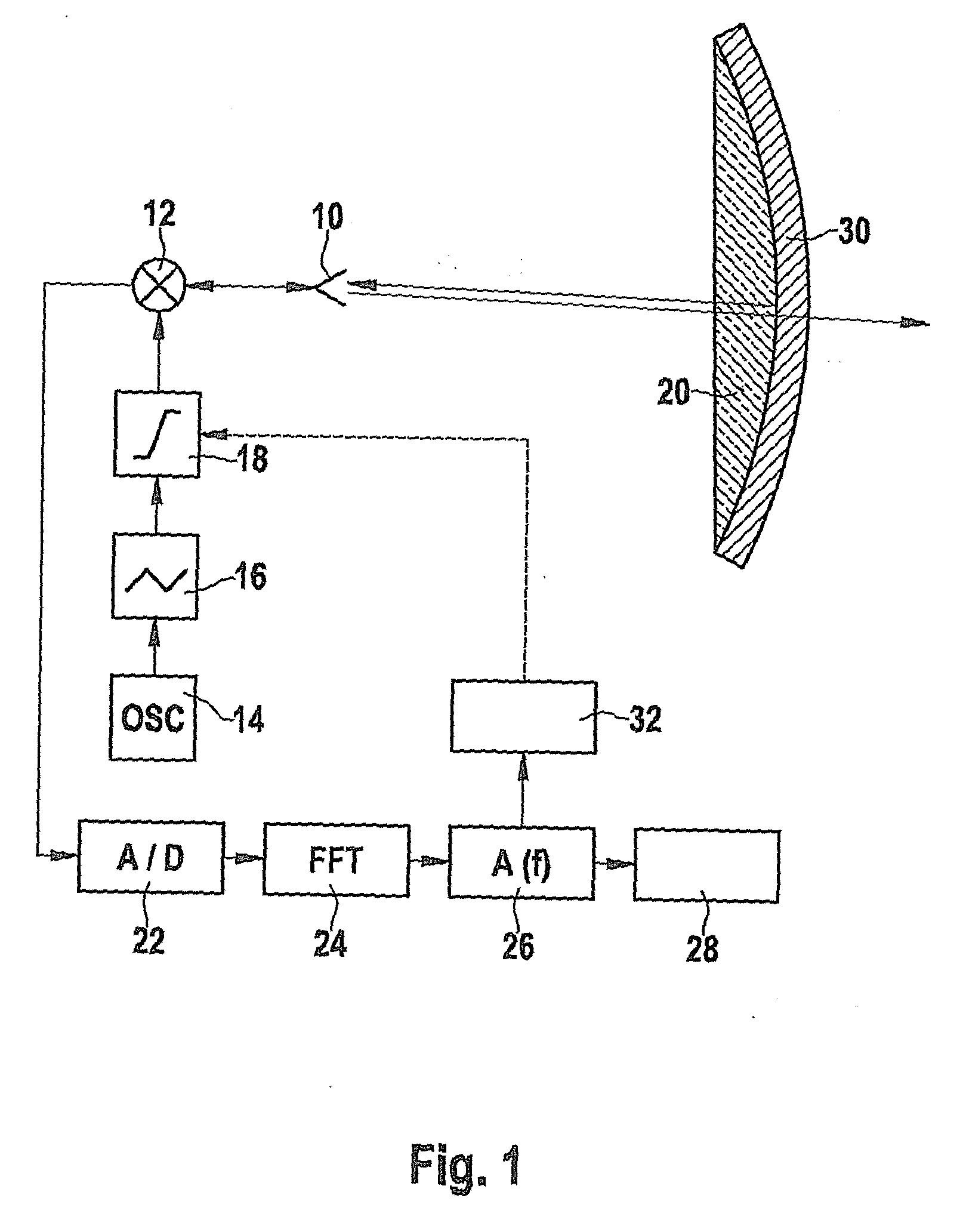Method for detecting loss of sensitivity of an fmcw radar locating device by diffuse sources of loss
a technology of fmcw radar and loss detection, which is applied in the direction of measuring devices, using reradiation, instruments, etc., can solve the problems of reducing the transmit and receive power of radar sensors, reducing detection depth and reliability, and easily forming losses on the surface of radomes
- Summary
- Abstract
- Description
- Claims
- Application Information
AI Technical Summary
Benefits of technology
Problems solved by technology
Method used
Image
Examples
Embodiment Construction
[0031]The radar locating device shown in FIG. 1 has an antenna 10 to which, via a mixer 12, a transmit signal is supplied that is produced by an oscillator 14 and is frequency-modulated by a modulator 16. Moreover, FIG. 1 symbolically shows an amplifier 18 with which the power of the transmit signal can be varied. In practice, however, this power variation can also take place in the oscillator or in the modulator. The signal emitted by antenna 10 is focused by a radar lens that here forms at the same time a radome 20 that covers the antenna and thus protects the antenna against weather influences.
[0032]If an object (not shown) is located by the radar locating device, the signal reflected by the object is focused by the lens onto the same antenna 10 that emitted the transmit signal (monostatic antenna design). In mixer 12, the received signal is mixed with a portion of the transmit signal, and as a mixed product a time-dependent signal (intermediate frequency signal) is obtained that...
PUM
 Login to View More
Login to View More Abstract
Description
Claims
Application Information
 Login to View More
Login to View More - R&D
- Intellectual Property
- Life Sciences
- Materials
- Tech Scout
- Unparalleled Data Quality
- Higher Quality Content
- 60% Fewer Hallucinations
Browse by: Latest US Patents, China's latest patents, Technical Efficacy Thesaurus, Application Domain, Technology Topic, Popular Technical Reports.
© 2025 PatSnap. All rights reserved.Legal|Privacy policy|Modern Slavery Act Transparency Statement|Sitemap|About US| Contact US: help@patsnap.com



